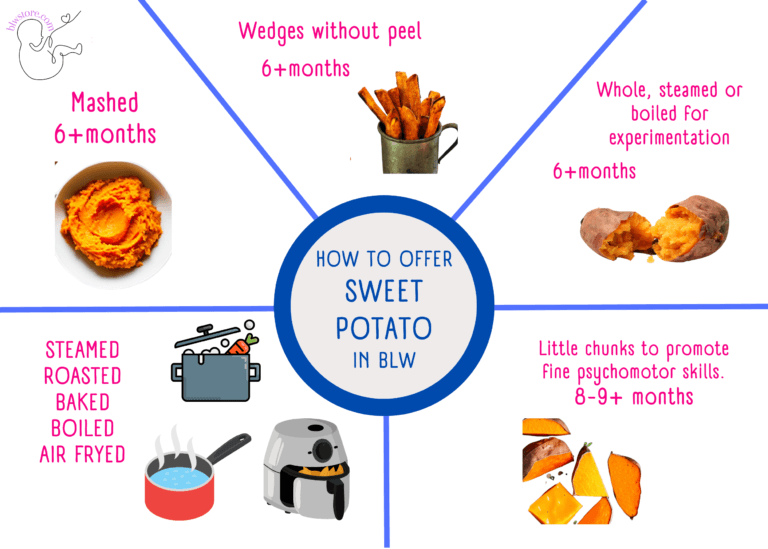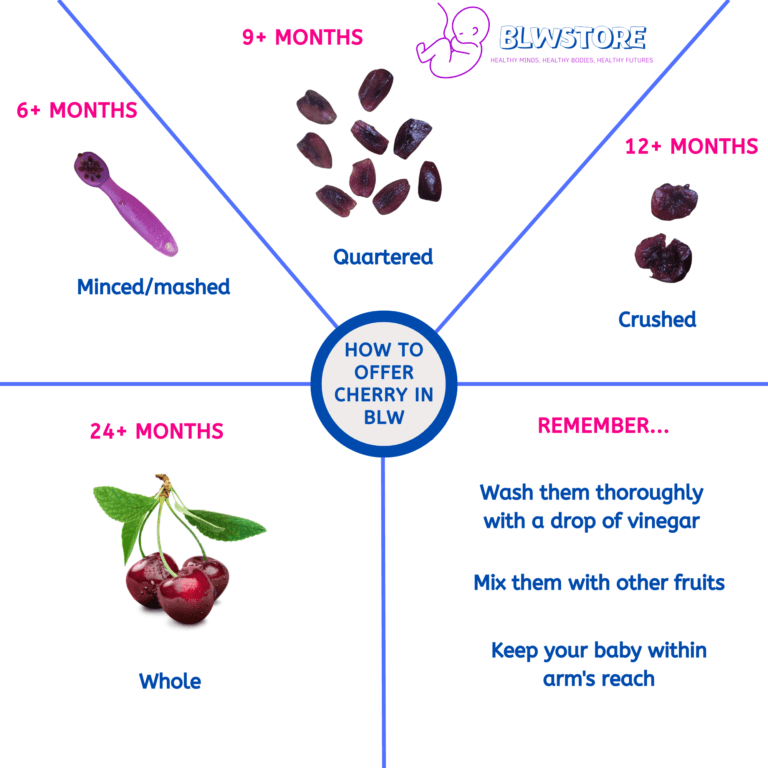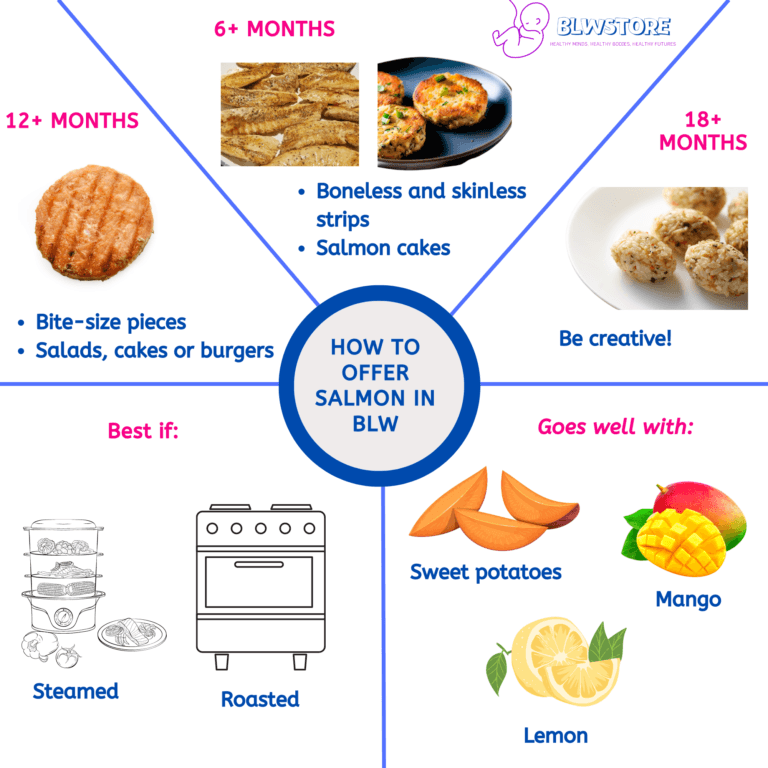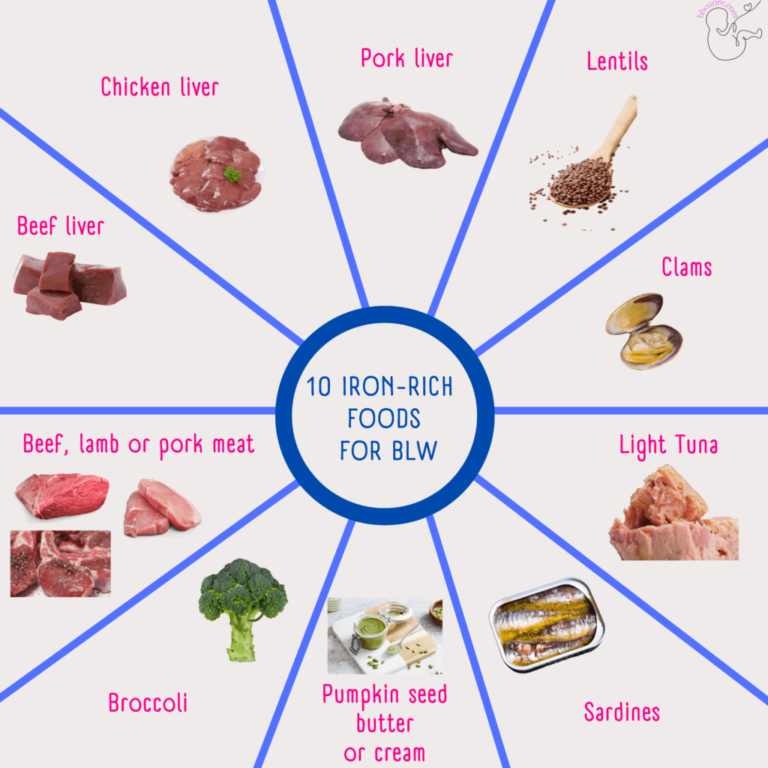
Did you know that nearly 50% of the calories in human milk come from fat?
When it comes to feeding your little one, getting the balance right can feel like an art form. Fats, in particular, can be a tricky area to navigate.
This article will help you discover the best sources of fats for babies and toddlers based on the most recent research, and why these fats are crucial for your child’s growth and development.
- Grass-fed meats: High-quality sources of essential fats
- Organ meats: Unconventional, yet packed with necessary fats
- Dairy: A familiar source of fats with plenty of benefits
- Fatty fish: Powerhouses of Omega-3 fatty acids
“A healthy diet is a solution to many of our health-care problems. It’s the most important solution.” – Dr. John McDougall
However, not all fats are created equal. Certain oils and fats, specifically non-organic seed oils such as soy oil, should be limited as much as possible.
Remember, becoming an expert at reading labels in the supermarket will be your greatest ally in this journey.
*Related reads: Best Protein Sources for Babies | Best Carb Sources for Babies
Why Do Babies Need Fats in Their Diet?
Fats significantly enhance their developing brains, support cell growth, and supply a vital energy source. A healthy intake of fats in a baby’s diet also helps absorb certain vitamins.
- Energy Boost: Fats provide nine calories per gram, more than twice what protein and carbohydrates provide. Thus, they are a crucial energy source for your constantly growing and active baby.
- Brain Development: The human brain grows rapidly during the first year of life, and fats, especially Omega-3 fatty acids, significantly aid this growth. This nutrient plays an essential role in the synthesis and functions of brain neurons and transmissions.
- Vitamin Absorption: Fats enable the body to absorb and store vitamins A, D, E, and K – all crucial for your baby’s growth and development.
- Healthy Skin and Eye Development: Fats help maintain healthy skin and promote normal eye development, ensuring your baby thrives inside and outside.
Which Vitamins and Minerals Are Best Absorbed with Fats?
Certain vitamins – specifically A, D, E, and K – are fat-soluble. This means they need fat to be adequately absorbed by your little one’s body. Incorporating healthy fat sources in your child’s meals allows these essential fat-soluble vitamins to be absorbed effectively and efficiently.
- Vitamin A: Crucial for healthy vision, immunity, and growth, Vitamin A is best absorbed with fats. Sources rich in Vitamin A include liver, spinach, and dairy products.
- Vitamin D: Often referred to as the ‘sunshine vitamin’, Vitamin D is fundamental for bone health as it assists in calcium absorption. Fatty fish like salmon and mackerel are excellent sources of Vitamin D.
- Vitamin E: This antioxidant protects cells against damage and promotes a healthy immune system. Almonds, spinach, and sweet potatoes contain ample amounts of Vitamin E.
- Vitamin K: Vitamin K is essential for healthy blood clotting and bone metabolism. Broccoli and prunes are rich in Vitamin K.
Are All Fats Equal? Saturated vs Unsaturated vs Trans
In the nutrition world, not all fats are created equal. They are categorized into three main types:
- Saturated fats
- Unsaturated fats
- Trans fats
Each has a different effect on your little one’s health, and it’s important to know how to distinguish between them.
| Fat Type | Description | Health Impact |
|---|---|---|
| Saturated Fats | Saturated fats, often found in animal products, have all their carbon atoms filled with hydrogen atoms. That’s why they are “saturated” with hydrogen. | Recent research has made remarkable shifts in perspective, affirming that saturated fats are not the villain they were once accused of being. They are natural and essential to human health, particularly for building cell membranes and hormones. |
| Unsaturated Fats | Unsaturated fats, which include both mono- and polyunsaturated fats, have some carbon atoms that are not fully laden with hydrogen. These fats typically come from plant sources and include omega-3 and omega-6 fatty acids. | Although they have been praised for their impact on heart health, an excessive intake can lead to an imbalance in the body’s omega-3 to omega-6 ratio, posing potential adverse health implications. They are best included in moderation. |
| Trans Fats | Trans fats, also known as trans-fatty acids, are predominantly created artificially during the hydrogenation of vegetable oils. They can also occur naturally in some animal-based foods. | Trans fats are widely recognized as harmful. They raise bad LDL cholesterol levels while lowering good HDL cholesterol, increasing the risk of heart disease. They should be avoided wherever possible. |
Best Fat Sources for Babies and Toddlers: Ranked
| Rank | Fat Source | Benefits |
|---|---|---|
| 1 | Grass-fed meats | These meats are a bundle of essential fatty acids—a fancy term for fats our bodies need but can’t make on their own. They also contain high levels of Omega-3 fatty acids, which contribute significantly to brain development and lower inflammation. |
| 2 | Organ meats | Though these might not be a common choice, organ meats such as liver and heart pack a nutritional punch. They are outstanding vitamin and mineral sources, including those fat-soluble ones like Vitamin A. |
| 3 | Dairy | Full-fat dairy products like milk, cheese, and yogurt have the advantage of containing various essential nutrients, including Vitamin D and calcium. |
| 4 | Fatty fish | Fats from fish such as salmon, mackerel, and trout are rich in Omega-3 fatty acids, essential for brain development and reducing inflammation. |
| 5 | Plant-based fats | Avocado, nuts, and seeds are excellent plant-based sources of healthy fats, although they don’t offer the same nutrient profile as animal-based fats. They are however a good alternative for the little vegetarians. |
1. Grass-Fed Meats: A Powerhouse of Essential Fats
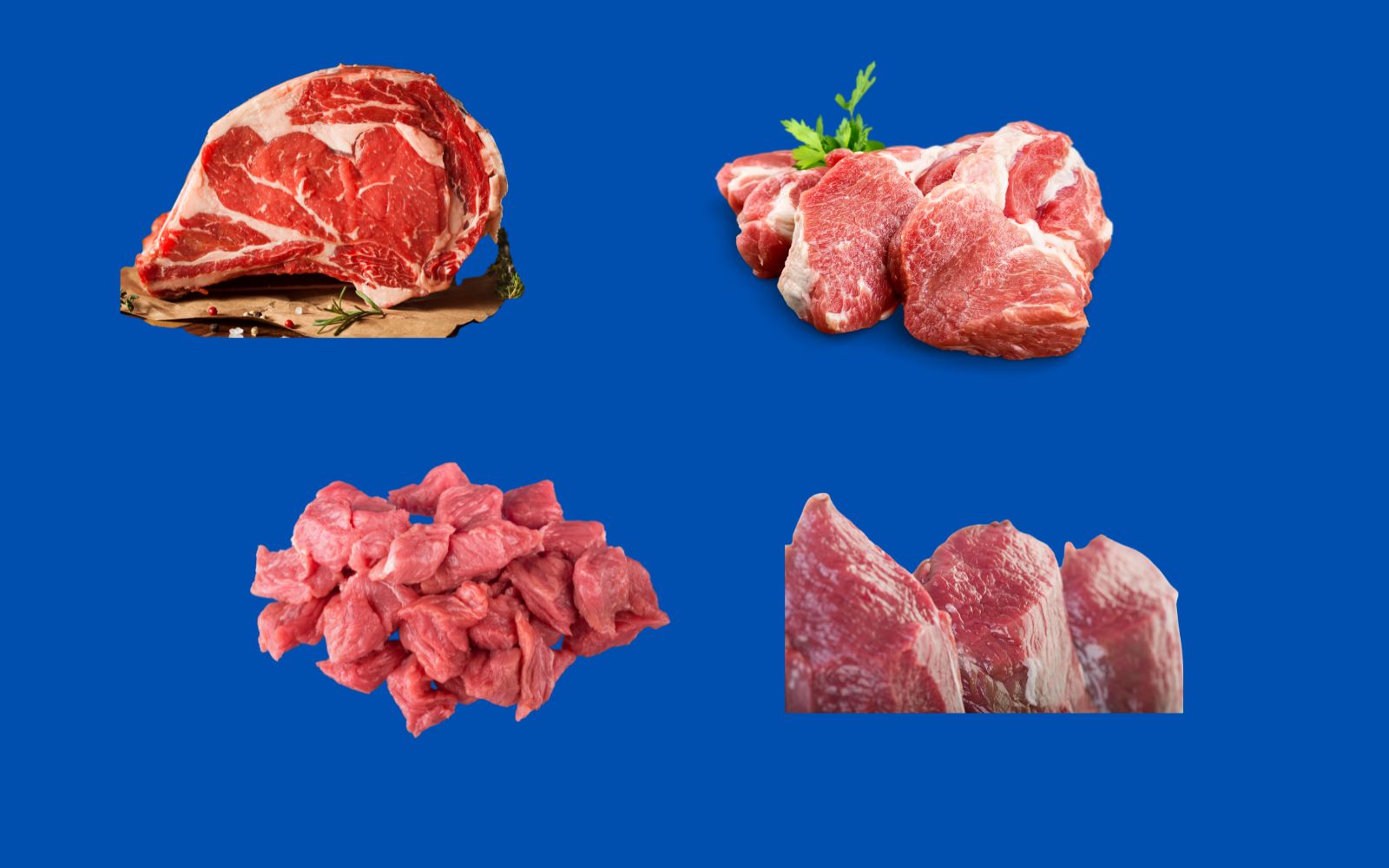
Grass-fed animals have a better omega-3 to omega-6 fatty acid ratio than their grain-fed counterparts. These fats are known as ‘essential’ because the body cannot produce them; they must be obtained from our diets.
Grass-fed meats, whether beef, lamb, or goat, supply your budding eater with conjugated linoleic acid (CLA)—a type of fat believed to reduce heart disease and cancer risk. Additionally, grass-fed meats are an excellent source of vitamins A and E, and they deliver a dose of healthy protein, contributing to your little one’s burgeoning muscle growth.
- Beef: A serving of grass-fed beef will give your child a healthy dose of omega-3 fatty acids. It’s also rich in vitamin E and other nutrients.
- Lamb: Grass-fed Lamb not only provides healthy fats, but also has a significant amount of vitamin B12, an essential nutrient for brain development.
- Goat: In addition to healthy fats, goat meat contains iron and potassium, helping your child’s blood cells and muscles function properly.
Note: Ensure the meat is thoroughly cooked to make it more digestible for your baby.
Important facts
Grass-fed beef has up to five times more omega-3 fatty acids than grain-fed beef
Eggs, particularly the yolks, are high in healthy fats and choline, a nutrient important for brain development. Be sure to choose eggs from free-range hens.
Related read: How To Offer Meat to Babies
2. Organ Meats: Unconventional Yet Essential Fat Sources

While feeding your child organ meats might not initially excite you, they have an incredible nutritional value. Often overlooked, organ meats such as liver, kidney, and heart from grass-fed animals are packed with healthy fats and provide a variety of crucial vitamins and minerals, including vitamin A, iron, and zinc.
Liver, for example, is particularly abundant in vitamin A, which is essential for eye health, immune system support, and overall growth and development. Grass-fed liver also offers an impressive amount of healthy fats, especially when compared to its grain-fed counterparts.
Heart, as another example, is a fantastic source of Coenzyme Q10 (CoQ10), a nutrient that supports heart health and cellular energy. Additionally, heart meat is a solid source of healthy unsaturated fats. Similarly, kidney supplies ample omega-3 fatty acids along with other essential nutrients.
The important part is to ensure these organ meats are sourced from grass-fed, ethically raised animals.
3. What About Dairy? The Lowdown On Fat Content and Benefits

Dairy is likely one of the first groups that come to mind when you think of dietary fat sources for babies and toddlers. However, it’s important to choose full-fat dairy products.
Recommended reads: When Can Babies Have Dairy? | Best Yogurts for Babies
Full-fat dairy products contain healthy saturated fats like butterfat, which is rich in short and medium-chain fatty acids. These fatty acids promote gut health and aid in nutrient absorption. Milk fat also contains essential fat-soluble vitamins like A, D, E, and K. Thus, it’s a nutritious food choice for your toddler.
- Milk: Whole milk is a great source of fat and also provides key nutrients like calcium, vitamin D, and protein. However, it should be introduced after your baby’s first birthday.
- Cheese: Not only is cheese a good source of fat, but it also provides calcium. Soft cheeses like cottage cheese can be a good introduction to solid foods.
- Yogurt: Full-fat yogurt is an excellent choice as it also contains probiotics that can support your baby’s gut health.
| Dairy Product | Fat Content (per 100 g) |
|---|---|
| Whole milk | 3.25 g |
| Cheese (cheddar) | 33.31 g |
| Yogurt (full-fat) | 3.25 g |
Despite its benefits, remember that dairy is a part of a balanced diet and should be combined with other beneficial fat sources we’ve discussed, like grass-fed meats, organ meats and fatty fish, to ensure your little one gets all the essential fatty acids they need for healthy growth and development.
4. Fatty Fish and Omega-3 Fatty Acids
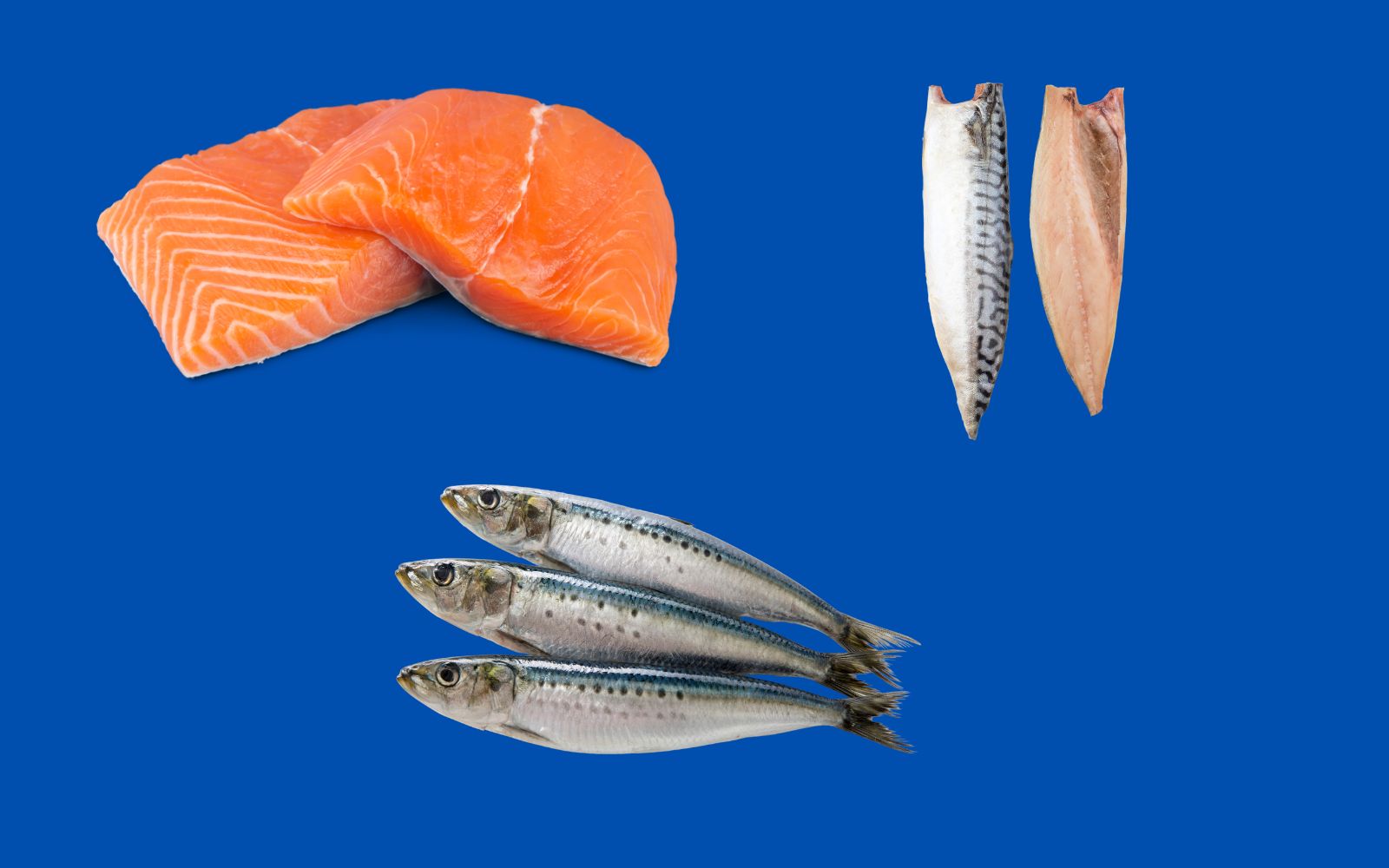
Feeding your young ones fatty fish such as salmon, mackerel, and sardines is like giving them nature’s multi-vitamin. According to the American Heart Association, omega-3 fatty acids aid in heart health, brain development, and inflammation reduction.
Why is omega-3 important? The brain is about 60% fat and omega-3s constitute a large portion of that! Our bodies cannot produce these essential fats by themselves — we must get them from the food we eat. Babies and toddlers who consume a diet rich in omega-3 fats can benefit significantly from its critical role in their cognitive and physical development.
- Salmon: Salmon is a superfood when it comes to omega-3 content. Plus, it’s high in vitamin D and low in mercury, making it a terrific fish option for your growing child.
- Mackerel: Besides packing a punch of omega-3s, Mackerel contains large amounts of vitamin B-12 and selenium, great nutrients for a growing mind and body.
- Sardines: These might be little fish, but they’re nutritional giants, with truckloads of omega-3, vitamin D, and calcium.
You can flake cooked fish into mashed potatoes, incorporate them into pasta dishes or purees, or even serve them as finger food if your little one is at the appropriate age and stage.
Whichever fish you decide to serve, make sure it’s thoroughly cooked and always check for bones.
And for those concerned about mercury content in fish — don’t be overly alarmed. While it’s true that certain types of fish contain higher levels of mercury, the benefits of feeding fish to your child far outweigh the potential risks.
The key is to offer a variety of fish, and not to rely solely on species known for high mercury levels such as shark, swordfish, or king mackerel.
5. Plant-Based Fats

Although our focus largely rests on animal-based fats, it’s essential to not overlook the role of plant-based fats in your little one’s diet.
Avocados, for instance, are a stellar source of heart-healthy fats and fiber. They’re also loved for their creamy texture, making them especially kid-friendly. You can effortlessly mix avocado with various dishes, from simple salads to more elaborate main courses.
Don’t underestimate the power of seeds and nuts either. Whether it’s flaxseeds, chia seeds, almonds, or walnuts, these tiny nutritional powerhouses contain a significant amount of beneficial fats. They’re also rich in fiber, and vitamins which are crucial for your child’s development. Always serve them ground or as spreads.
Also abundant in monounsaturated fats are olives and extra virgin olive oil. Furthermore, extra virgin olive oil has powerful anti-inflammatory properties and is rich in antioxidants.
Let’s not forget about the mighty coconut. Coconut provides substantial saturated fats and unique compounds like Medium Chain Triglycerides (MCTs) which are easily digestible, provide energy, and aid brain development.
Which Fats Should Your Baby Avoid?
There are some fat sources which might seem appealing or convenient, but would be best to avoid for the overall health and wellbeing of your child.
- Non-Organic Seed Oils: These often contain high amounts of omega-6 fatty acids, an essential fat that your child’s body can’t produce on its own. However, a diet too high in omega-6’s can create an imbalance as your child also needs Omega-3’s for optimal health and development. Omega-6’s are legitimate when sourced from whole foods, but not from processed seed oils – especially soy oil. Also, pay attention to the labels – seed oils (like canola, safflower, and sunflower) are often labeled as “vegetable oil”.
- Trans Fats: These are best to be categorically avoided. Even though trans fats naturally occur in animals, these are considerably different from the industrially processed trans fats found in many baked goods and fried foods, known as partially hydrogenated oils. These trans fats not only lack any nutritional benefit, but they can also pose significant health risks.
How to read labels to find healthy fats
- Check the Ingredients List: The first step to understanding a product’s nutritional content is looking at the list of ingredients. They are listed in order of quantity, from the most to the least. This means that if a type of oil or fat is listed first, it’s the main ingredient. Remember that we want to avoid non-organic seed oils, especially soy oil. Instead, you want to see names like grass-fed beef, dairy, or fish mentioned there.
- Understand Types of Fats: Look at the Nutrition Facts panel. You’ll see a section for fats. It’s split into saturated, trans, and unsaturated fats. Saturated fats are beneficial for your baby’s growth and development, especially when they come from animal sources. Trans fats are to be avoided completely, and unsaturated fats should ideally come from foods such as avocados, olive oil, and fatty fish.
- Beware of Hidden Sugars: Although our focus is on fats, it’s important to note that many processed foods containing unhealthy fats also contain high amounts of sugar. Words like corn syrup, fructose, sucrose, or anything ending in “-ose” is a sugar-based ingredients and should be minimized.
Look for labels such as “grass-fed”, “wild-caught”, or “organic”.
Terms like “made with whole grains” or “contains real fruit” could still be masking unhealthy fats and high sugar content. Similarly, products marketed as “low fat” or “fat-free” typically compensate for the lack of flavor with added sugars or unhealthy fats.
What’s the Best Fat to Cook With?
| Fat Source | Perfect Cooking Temperature | Maximum Temperature (Smoke Point) |
|---|---|---|
| Grass-Fed Butter | Medium heat (around 250-300°F or 121-149°C) | 302-350°F (150-177°C) |
| Coconut Oil | Medium to High heat (around 350-375°F or 177-190°C) | 350-385°F (177-196°C) |
| Olive Oil (Extra Virgin) | Low to Medium heat (around 250-325°F or 121-163°C) | 320-375°F (160-190°C) |
| Ghee | Medium to High heat (around 300-375°F or 149-190°C) | 450-485°F (232-251°C) |
| Avocado Oil | High heat (around 375-450°F or 190-232°C) | 480-520°F (249-271°C) |
Grass-Fed Butter: An excellent choice for cooking, grass-fed butter has a smoke point high enough for most household cooking needs.
Coconut Oil: Even though it’s a plant-based fat, coconut oil has a variety of health benefits and a high smoke point, making it ideal for cooking.
Olive Oil: Known for its heart-health benefits and rich in monounsaturated fats, extra virgin olive oil is usually recommended for low to medium heat cooking.
Ghee: If your child is lactose intolerant, ghee (clarified butter), might be a good solution. It is lactose and casein free and has a high smoke point, making it an excellent choice for cooking. It’s also packed with fat-soluble vitamins.
Avocado Oil: With one of the highest smoke points, avocado oil is perfect for high-heat cooking. It’s also high in heart-healthy monounsaturated fats and vitamin E.
Bottom Line? Know Your Fats!
Every parent wants to ensure their child’s healthy growth and development, which is intrinsically linked to their diet and nutrient intake.
Knowing the good fats from the not-so-good ones, then, becomes a crucial component of providing nutritious meals. We hope this guide has made your grocery shopping a little easier and your cooking more confident and informed.
Remember, what matters most is not just the quantity of fats, but more importantly, the quality of those fats.
We’re Maria and Alberto, a married couple and educators who are nutrition enthusiasts. Even before we had kids, we were already crazy about nutrition.
We’d read scientific articles, watch videos from nutritionists, and spend hours listening to nutrition podcasts.
Today, we continue doing this, but in a different way, as we’ve learned to sift through the noise and trends. Nutrition, like any other field of knowledge, the more you read and learn, the more you develop a comprehensive understanding of reality, and that’s what has happened to us.
Before having our first child, we focused on learning everything we could about child nutrition, using the same techniques we had already employed, backed by our extensive knowledge in nutrition.
Our mission is to help other parents with their children’s nutrition, to help them become the best versions of themselves.
If we are what we eat and drink, which is absolutely true, let’s do it right!


